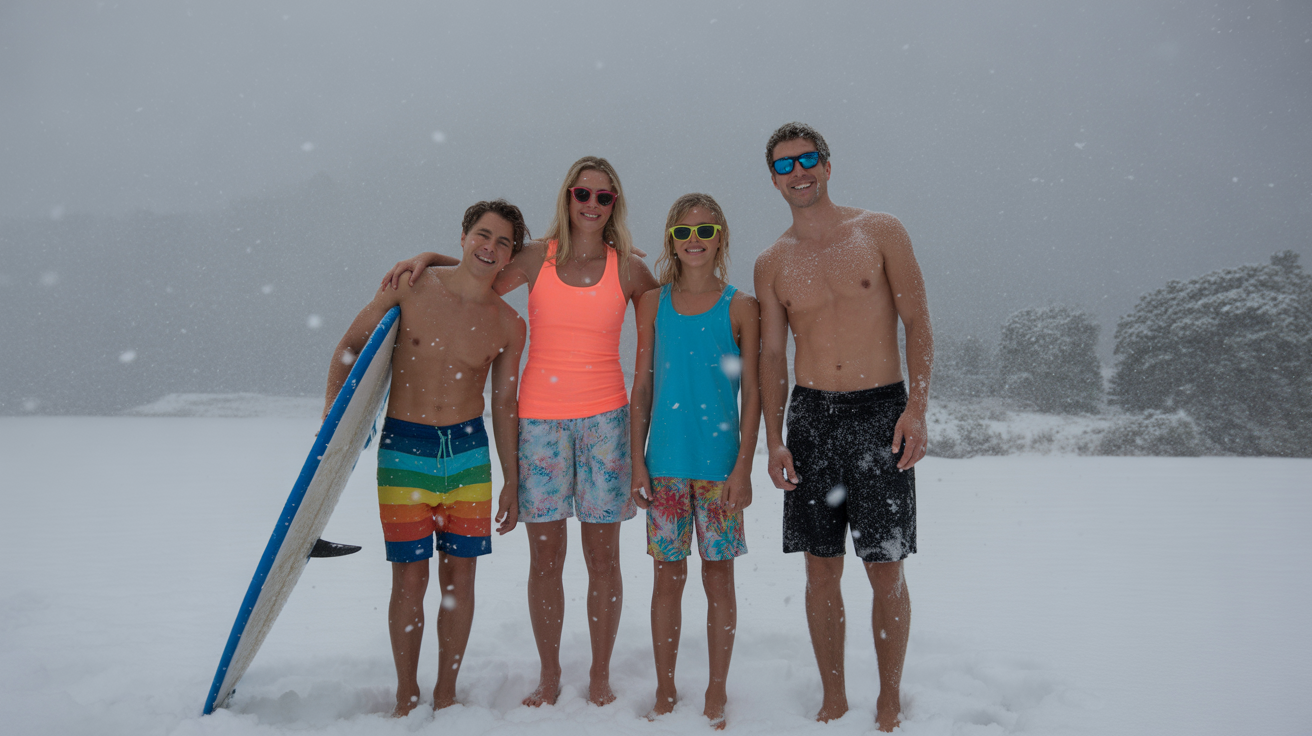When our family moved to Florianópolis, Brazil, we were chasing comfort and a milder climate. As expats from Pullman, Washington, we’d chosen southern Brazil because we were afraid of high temperatures—the endless summer heat that makes you feel like you’re melting into the pavement. Floripa, as the locals call it, seemed perfect: warm, breezy, beautiful.
A month into our new life abroad, we’d settled into a rhythm. Mornings started sunny, afternoons brought soft ocean air, and evenings felt peaceful by the water. This is our kind of weather, we thought. The kind that makes you feel at ease with the world.
Then one morning, we woke to a chill in the air. The locals called it Vento do Sul—the wind from the south that signals the arrival of winter in southern Brazil. “Coldest day in a while,” someone mentioned, but to us it looked like any other pleasant morning. The sky was bright, the sun was out. We dressed like always: shorts, T-shirts, flip-flops.
We loaded the kids into the car and drove to the grocery store, music playing, windows cracked open to that fresh ocean breeze. In the parking lot, a family of four walked toward the entrance bundled up like it was January in Pullman—coats zipped to the chin, hats, gloves, the whole thing.
I looked at my wife. “Uh… how cold is it?”
She checked her phone, then squinted at the screen. After a quick Celsius-to-Fahrenheit conversion, we both laughed.
Sixty-four degrees.
We got out of the car and felt the curious looks—locals eyeing the crazy foreigners in summer clothes on a “cold” day. It was one of those small, funny moments that stick with you. The kind of expat memory that becomes family legend—the time we discovered how relative “cold” really is.
Fast-forward five years. My wife showed me the weather forecast for the week, pointing at Monday and Tuesday. “It’s going to be cold those days,” she said.
I looked at the numbers. Sixty-four degrees again.
And she was right—it was going to be cold. I caught myself wondering if we had the right jackets, if the kids still fit in their sweaters. Somewhere along the way, the Vento do Sul had done its work. We’d adapted to life in Brazil, right down to our sense of temperature.
It turns out it’s not just the weather that changes you—it’s how you live in it.

